Recipe for an Ancient Craft: Building a Viking Bowyer’s Workshop in Norway Part II
I stood outside the barn and with both hands, pressed against its enormous red doors; the flakes of paint coming off and sticking to my fingers as I entered. The bow staves we ordered the previous year had arrived the day before I left Lofoten, but I was assured that they were now safely tucked away somewhere in the barn; ‘somewhere’.
I walked inside, but the year had made me forget how big it was. Filled in every corner of its wooden walls were the artefacts of a museum’s long history. Many tar stained ropes looked down at me as I stepped over a couple of old rowing oars. They were leaning against a crooked table that was neatly set with rusty tools, a half closed bucket of paint and a Coke bottle, oranged from the linseed oil. I spotted the shape of a large, straw archery target that stood out from the shadows in the back; tattered and beaten through from use. While the smell of the horses in the stable below, crept up through the cracks in the floorboards and mixed with the sweet musk of tar that filled the air.
“I walked closer and saw, protruding from one end of the box, as though it was gasping for air, the yellow and amber glow of the Yew tree”.
 Amid these relics of activity, seemingly collected with as much love as those that are usually kept behind glass, I could see a long, brown box that was taped shut and wrapped in a pelt. I walked closer and saw, protruding from one end, as though it was gasping for air, the yellow and amber glow of the Yew tree. At length, I lugged my parcel back to the longhouse and threw it in the middle of the workshop. I knelt down, and making use of a small incision I made the year before, ran my knife along its corners; carefully, so as not to cut too deep. The box came apart to reveal a collection of sticks that only a bow-maker would appreciate. One such bow-maker, Daniel Talarud, had prepared this selection of staves for me. And scrolled on the ends of each limb, over a sealing of beeswax and white paint, were the names of each species in black ink: Hazel, Rowan, Ash, Hickory and, the two most important species of Viking Age archery: Yew and Elm.
Amid these relics of activity, seemingly collected with as much love as those that are usually kept behind glass, I could see a long, brown box that was taped shut and wrapped in a pelt. I walked closer and saw, protruding from one end, as though it was gasping for air, the yellow and amber glow of the Yew tree. At length, I lugged my parcel back to the longhouse and threw it in the middle of the workshop. I knelt down, and making use of a small incision I made the year before, ran my knife along its corners; carefully, so as not to cut too deep. The box came apart to reveal a collection of sticks that only a bow-maker would appreciate. One such bow-maker, Daniel Talarud, had prepared this selection of staves for me. And scrolled on the ends of each limb, over a sealing of beeswax and white paint, were the names of each species in black ink: Hazel, Rowan, Ash, Hickory and, the two most important species of Viking Age archery: Yew and Elm.
“Never before have I had the opportunity to work with so many different kinds of materials”.
Never before have I had the opportunity to work with so many different kinds of materials. So too, do the public rarely get a chance to witness such a diverse use of woods in an ancient context.
I am often asked: ‘is it real wood?’, or ‘what type of tree is that?’
It comes as a surprise, that of the woods that were once such a common site in the past, many people today do not recognise their grains or have ever even seen beneath their bark. But for every hundred or so encounters like this, there are those few gems who spot them immediately. They are usually the older guys who grew up near some sort of lake or cabin in the woods; having worked in saw mills or travelled around in ships as carpenters. They even pick up some of my replica ‘Viking-Age’ tools and reminisce about using ones of a similar shape in their time. Having grown up in the city, I regret that I will never have the same traditional connection with the woods that they have. It certainly feels Ironic, dressing up like an ancient craftsman and talking about tools to men who are probably the last of the very line I am trying to reenact.
“Having grown up in the city, I regret that I will never have the same traditional connection with the woods that these guys have…”
However, Experimental Archaeology certainly does allow us to see where their woodworking heritage once came from, and this is something they are proud to hear and fascinated by. Not only does my research allow me talk about the wood species of bows and arrows in the Viking-Age, through experience, I am able to discuss with them the craftsmanship behind bow-making; of the choices of shape and dimension; length and width; how they chose between different tools at each phase of production and how each bow-maker read the grain of the wood, shaped and bent the bow through feeling; acting through his muscle without measurements.
“However, Experimental Archaeology does allow us to see where their woodworking heritage once came from…”.
My job is to talk about my craft, but more accurately, I aim to evoke a thought, that provokes a question. Though many are interested in the story of the bow, an equal number are just as interested in how I came to work here. A woman today asked me about my arrows. She was bouncing a small baby in a sling on her front, rushing my answer slightly, fearing the child may erupt at any moment. I offered her one of my arrows and she let go of her boys’ two feet to take it. As it moved past his face, the eyes of the child grew as wide as two golf balls, and just as the feathers were clenched and crushed between his little fingers, his mother pried it from his hands before it made a break for his mouth.
“I’m sorry!” She said, handing it back.
“That’s ok!” I laughed, running the fletchings through my hand, rejuvenating them. “I’m sure it’s not the first time in a thousand years a child has tried to destroy something nice in this house”.
“But where did you learn to do all this?”, she asked, continuing to distract the baby with his own mitten.
This story I actually have hidden, like an easter egg, in a corner of my workshop. Hanging on the wall behind me, I have an old and tattered textile. To all who pass it, it remains merely a rag of atmospheric decoration; but for those who ask the right questions; I walk over, pull back the textile and reveal what’s behind it.
“…for those who ask the right questions: I walk over, pull back the textile and reveal what’s behind it”.
It is the poster that I submitted with my Master’s thesis; a time-line that shows all the bows we have excavated in Ireland, dating between the 10th and 13th centuries. When cities like Dublin and Waterford were, in their infancies, merely settlements of mud and wood, bows that were once half- worked and discarded after breaking, were simply cast aside and forgotten about. Some ended up in a rubbish heap or condemned to the fire. Others were reworked and used in the wattled walls of Early Medieval houses.
I have studied them in detail, and by using the poster, each visitor can see for themselves my own thought process when piecing together the methods through which each of these fragments were made. However, there are many tricks and techniques that cannot be read from objects alone. I owe a lot of what I learned in the beginning to a very good friend of mine, Mikke Reinikainen. Nearly seven years ago, before I ever discovered archaeology, I met Mikke at a music festival in Northern Germany. He and a friend of his had set up a blacksmith’s forge in the Rathaus Square in Kiel, right outside the little Irish pub I was singing in; their hammers rhythmically ‘clinking’ along to the chorus of ‘Whiskey in the Jar’. During my break, I brought them each a cold pint of Guinness. He showed me his work, they came to our gig that evening and a friendship was forged.
“He and a friend of his had set up a blacksmith’s forge… their hammers rhythmically ‘clinking’ along to the chorus of ‘Whiskey in the Jar”.
Two years later, I completed my first bow; an eyesore that in my excitement, I just couldn’t resist posting on Facebook.
Minutes after posting:
‘Bwa-doop!’, an instant message came from Mikke.
“Why didn’t you say you were making bows?!” he asked.
“I thought you were a blacksmith”, I typed,
“Yes, but I’ve been making bows for years!!!”.
Later that year the deadline for my thesis was looming. The yew trees I cut had been drying in the sun that beat down relentlessly over Dublin that summer. I was standing in my garden with my tools placed around me, while my dog lay by my feet, rolling in a slowly growing pile of wood shavings. A yew bow was on the wall. In my right hand, was the rope of the tiller, and in my left, was Mikke, peering through the screen of my laptop, examining my bow as I bent it carefully back and forth.
It was the first time I experienced why, as early as bows were being carved with stone, prehistoric people have been making their bows from yew. A yew tree can live for many hundreds of years. Because it grows at such a slow rate, the grain is incredibly tight. It can also get very straight if it has gown in the shadows, partially starved of sunlight. Unlike other younger and carefree woods, who’s branches grow about in every direction, the yew doesn’t waste any time. It can’t afford to. So it grows straight up, saving its branches for the sunlight. And if another fool hearted species gets in its way, it turns at a right angle, bypasses it and continues again on its original route.
“…as early as bows were being carved with stone, prehistoric people have been making their bows from yew”.
Some become so tall, I often need to use a monocular to identify its pins. When the yew is split, you can see two colours: a pink inner heartwood that turns to amber when it dries, and a lighter, more supple sapwood that rests just beneath the bark. This inner heartwood becomes dense and strong, while the outer sapwood remains flexible. When you look at each of the Viking bow fragments from Ireland under a magnifying glass, you can see the dividing line between these two natural layers. By the early Iron-Age, people in Northern Europe had learned to combine both of these natural laminating qualities, making their yew bows both strong, and flexible.

Detail of where the bow sits in the yew tree; the sapwood in the back of the bow, the heartwood in the belly.
It’s no surprise then, why ninety percent of the bow fragments we have from the Viking Age are of Yew (Halpin 1997; Halpin 2008, Henken 1935-7). But such trees today are rare and even nonexistent in places like Lofoten, the common woods here being Birch, Willow and Rowan; with exception to the American pines that were introduced in the 1950’s. On one archery forum, a fellow bow-maker referred to me as working in the ‘Barren Lands’ of Norway. Environmental analysis of the hearths in the Chieftain’s Longhouse at Borg I, tells us that it was not much different here in the Viking Age than today, with charcoal remains identified as mostly birch and willow (Hansonn 2003). This perhaps explains why in over 400 years of settlement, only one arrowhead was ever found in the Chieftain’s Longhouse, in Borg I. Compare this to the hundreds of Viking arrowheads uncovered during the excavations of Waterford and Dublin (Halpin 1997), and you begin to wonder about the bow the Borg Arrow was made for.

Above: Plan of the foundations Borg I, the Chieftain’s Longhouse; showing walls, postholes and charcoal remains in the Living (Room A) and what’s now called the Feast Hall (Room C) Image from (Hansonn 2003)

My things were not so well hidden to Pedar, the son of Terje Boe; who tagged my box for me while I was gone.
Standing in the reconstructed living quarter near the place where that arrowhead was found, I leaned my modern Yew and Elm staves against the wall. I then placed a couple of Ash and Hazel staves beneath one of the beds and went to see about my tools, which for a year, I had left hidden around different parts of the longhouse; archaeologists find medieval ‘hoards’ for a reason!
I took a box from the upper section in the roof and another I had stashed in the walls of the house.
“Together in these boxes were the pieces of the first blacksmith who worked here over twenty years ago; a handful of beautifully forged replica Iron-Age tools”.
 Together in these boxes, were the creations of the first blacksmith who worked here over twenty years ago; a handful of beautifully forged replica Iron-Age tools. Out of those they have on display, I use the ones he copied from the Mastemyr tool chest, a rare and valuable hoard of woodworking and blacksmithing tools that were found in a bog in Gotland, Sweden.
Together in these boxes, were the creations of the first blacksmith who worked here over twenty years ago; a handful of beautifully forged replica Iron-Age tools. Out of those they have on display, I use the ones he copied from the Mastemyr tool chest, a rare and valuable hoard of woodworking and blacksmithing tools that were found in a bog in Gotland, Sweden.
At eye level, three axes now hang under a shelf of pots filled with feathers and bowls of beeswax. Next to the axes, there is a brutal looking saw, affectionately known around the house as ‘Bear’, for the ‘whooshing’ growl it makes when it bites into the wood.
Every knot is a near weak point and every splinter is a potential fracture.
“Make sure the back of that bow is as smooth as a baby’s @*$#!!!”, I hear Mikke saying, constantly in the back of my mind.
To do this we use a file, a useful tool in a world that has no place for sandpaper. They too are copies from the Gotland tool chest, but they are almost identical to those on display in the National Museum in Ireland.
The older tools feel different to the ones I am used to today. But after a while you figure out how to use them more efficiently. Woodworking hand axes today are made from a high carbon steel, they hold an edge longer, but they are really heavy to compensate for the fragility of high amounts of carbon. These axes are thinner and lighter, and rather than bringing the axe down over my head repeatedly, with a flick of the wrist with these, I can chop for hours without feeling that strain my forearm is so used to.
“Of all the tools I get to play with here, there is one I treasure the most…”
Of all the tools I get to play with here, there is one I treasure the most. It was during my first month working at the Lofotr Viking Museum that received a text from the main office, to go down and collect a package that was addressed to me. As I entered the white wooden building at the administration, Gauta, one of the younger Norwegian porters, was on his way out with a long, cardboard parcel under his arm; a sharp piece of steel jutting out the end.
“Be careful of that!”, he said laughing as he handed it to me, “It looks like a nail or something!”.
But I knew what it was.
 I carefully opened the parcel and inside I saw three beautifully fletched medieval arrows, and resting on top of them, was my own custom made, bow-maker’s draw knife; hand forged by Mikke.
I carefully opened the parcel and inside I saw three beautifully fletched medieval arrows, and resting on top of them, was my own custom made, bow-maker’s draw knife; hand forged by Mikke.
In awe at how light it was, when I held it felt like my drawknife. Then I laughed when I noticed he made the handles out of Yew. It almost glowed as I removed it from its wine-red, leather cover. Then I noticed a detail that really brought a smile to my face.
Engraved into the surface of the steel was my own name; ’Sionnach’, the Irish word for ‘Fox’. I thought to myself, ‘well, now I have no excuses!’
So I picked up the parcel, headed back to the longhouse and I began carving a bow.
If you enjoyed this article please ‘Follow’ me on WordPress, or add your email address on my Homepage to receive updates on my latest posts
References:
Halpin, A. (1997) ‘Military Archery in Medieval Ireland: Archaeology and History’. In: Europe. Brugge. Conference 11.
Halpin, A. (2008) Weapons and Warfare in Viking and Medieval Dublin. Dublin: National Museum of Ireland.
Hansonn, A. M. (2003) ‘Plant Remains from Borg I: 1’ In: Munch, G. S., Johanson, O. S. and Roesdahl, E. (eds) (2008) Borg in Lofoten: A Chieftains’s Farm in North Norway. Trondheim: Tapir Academic Press.
Henken, M. (1935-7) ‘Ballinderry Crannog No. 1’. Proceedings of the Royal Irish Academy.
 ArchaeoFox: Exploring the World Through the Past
ArchaeoFox: Exploring the World Through the Past 

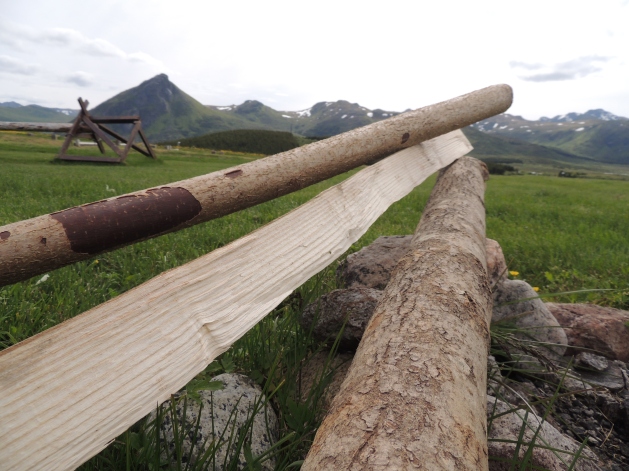

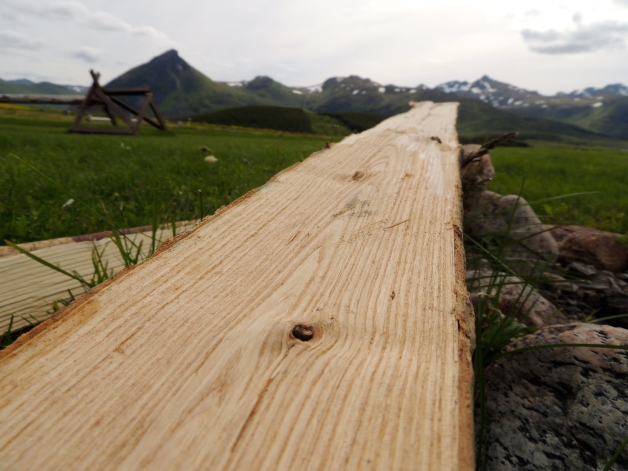
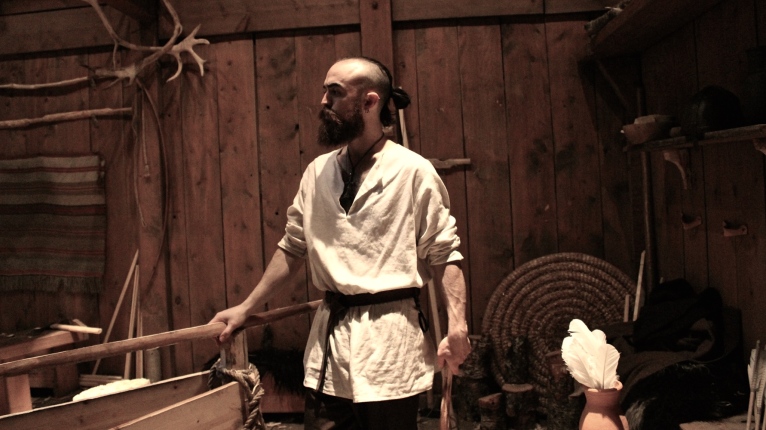






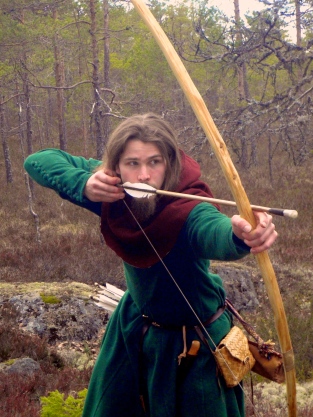







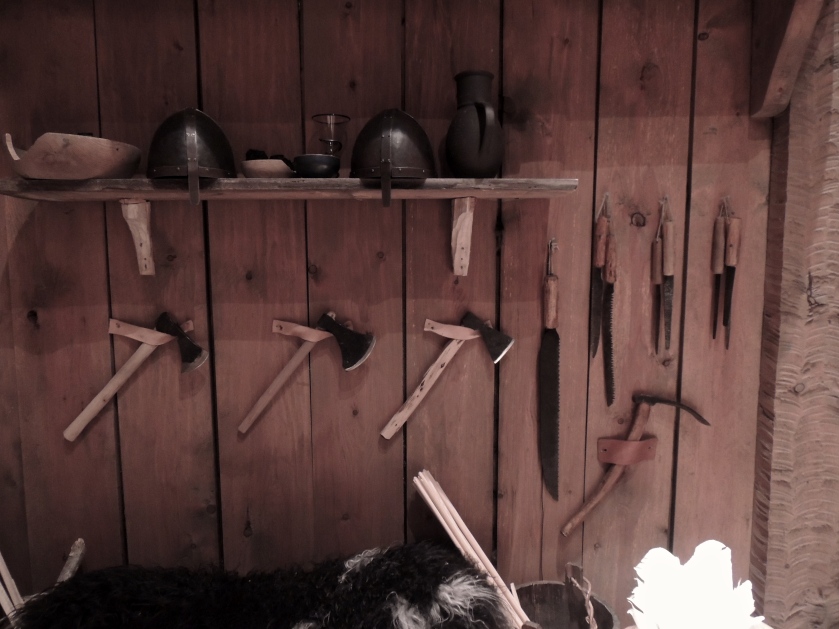









Reblogged this on First Night History.
LikeLike
Thanks 🙂
LikeLike
Thanks for posting this nigh-gargantuan post! It was nice to get a glimpse of your purpose and past 🙂
LikeLike
Thanks Evan 🙂
LikeLike
Reblogged this on StraumEyjar Buelag Fløya Bueskyttere.
LikeLike
Thank so much!
LikeLike
you’re very welcome 🙂 see you in at the market!
LikeLike
Wonderful article. Thank you!
LikeLiked by 1 person
Your very welcome! More to come!
LikeLike
Do you have a video displaying your work? I am a reenactor in the U.S. who would love to see more of your process and what kind of strings you would suggest. I’ve not found much in the way of preserved examples in English sources and I’m not sure where else to look.
LikeLike
It depends what period you are interested in. For regular traditional bow making check out the Bowyer’s Bible book series. the English longbow and how they were made has also been thoroughly published. For videos on how I do things, check out the video section of my website. Thanks 🙂
LikeLike
I have been looking into 900’s and earlier Norse region bows and the Bowyer’s Bible has two good examples from this period/region but it looks as if you have access to many more from that region. I didn’t mean English longbows, I apologize I should have clarified, I meant the English language 🙂 I have tried some google translate in the past but it hasn’t been any more useful than the limited information in the bowyer’s bible. I didn’t realize the site has a video section! I will have to do some viewing when I get home from work.
And thank YOU! this series is inspiring. I very much look forward with green eyes of jealousy to see what you post next.
LikeLike
This is amazing stuff. Very fascinating.
LikeLike
Thanks very much, I’m glad you liked it, more to come! 🙂
LikeLike
Thank you very much! Be sure to share and follow for my next articles 🙂
LikeLike
I am gradually working my way through your post as I have only just found your blog which I find fascinating and informative .Interesting to me because I used to be involved with Re-enactors. Your video of bow making and shooting is excellent .I am an archaeologist and found your blog through my teacher where I am studying Mycenaean Linear B script writings. I will follow you.
LikeLiked by 1 person
How cool! Who is your teacher?
LikeLike
My teacher is Richard Vallance Janke he is Canadian. Here is his blog address http://www.linearbknossosmycenae.wordpress.com
He will be delighted for you to contact him because he is not an archaeologist but welcomes any information concerned with archaeology and the Linear B scripts which is why he and I get along so well ,He teaches me Linear B and in return he gleans archaeological information from me so we make a good team. Unfortunately he has not been too well recently so be patient for a reply.
LikeLike
Pingback: The Last Viking Voyage | ArchaeoFox: Exploring the World Through the Past
I was wondering: is your Master’s thesis available digitally? I’d love to learn more about the Hiberno-Norse bows and their reflexed construction.
LikeLike